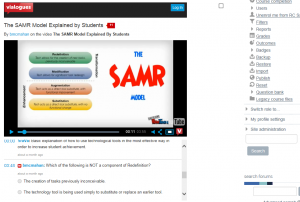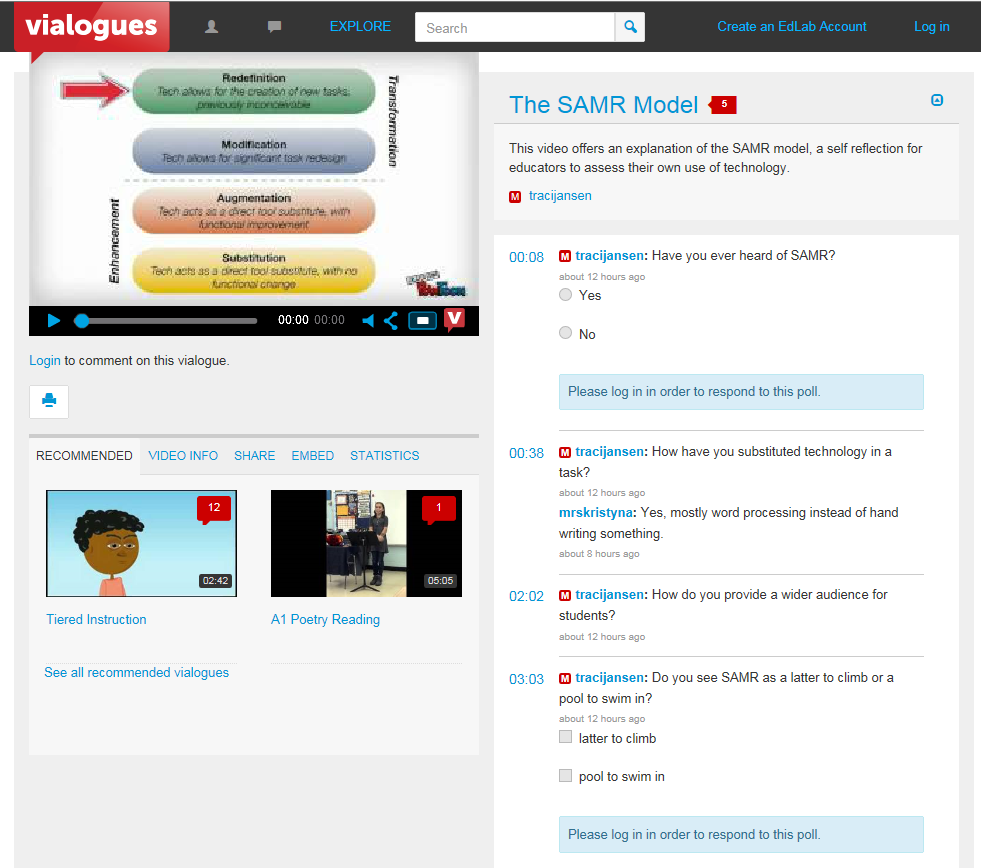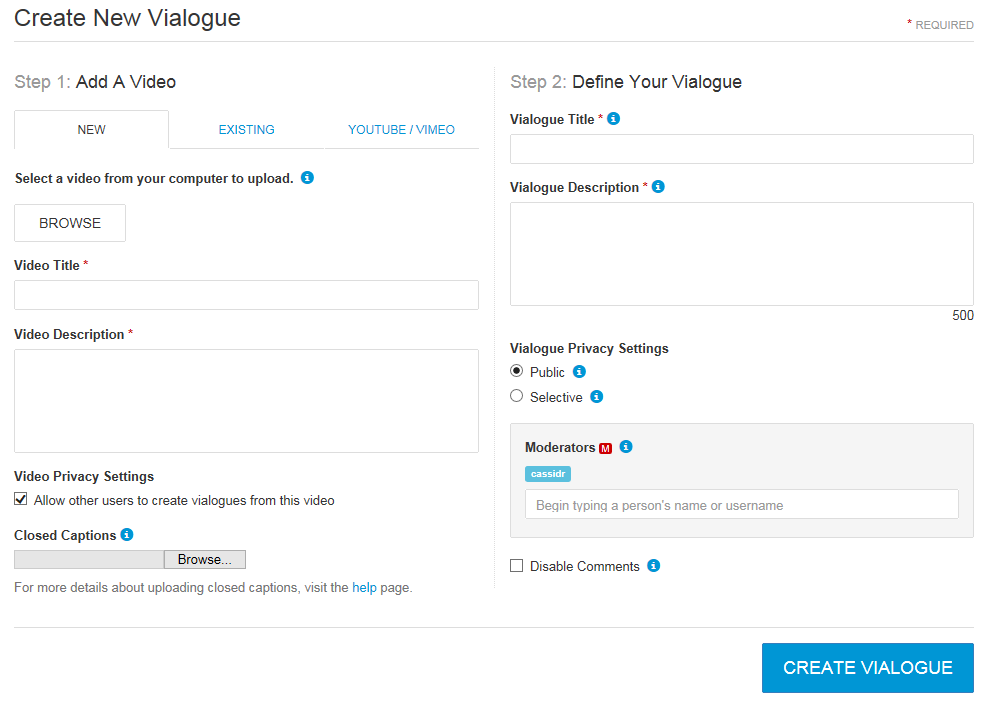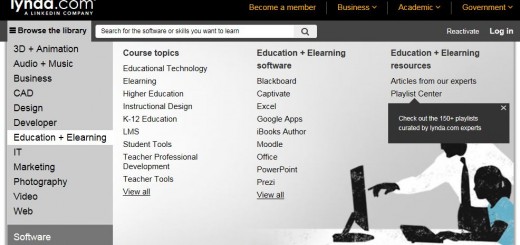A-Z Tools & Technologies: Vialogues
What is it?
Vialogues is a free online tool from EdLab, Columbia University, that allows you to create discussions around videos currently available online, or videos you have created and want to upload. This is a great tool for building module-level conversation around, and checking the understanding of, a video.
How does it work?
As a registered user of Vialogues, you can upload your own video or choose one from YouTube to act as the focal point of your conversation. You can then post poll questions or add comments for other people to respond to, alongside the video. These can be time-stamped to particular points of the video so they are contextualised for the viewer. You can also view ‘comment density’ statistics to see which points in the video are stimulating the most questions and replies.
There is an option to upload a captions file for accessibility (Vialogues also recommends a little cheat to creating captions: upload your video to YouTube as an unlisted video, download the WebVTT caption file auto-transcribed by YouTube, and then delete your video. You can edit out any incorrect captions before uploading to Vialogues). Finally, all of this can be embedded into another blog or website.
Steps:
- Sign up for an EdLab account
- Upload/select your video
- Start adding comments or Q&A posts
- Share the link with your class or embed into Moodle
Done!
What about teaching and learning?
The advantages and opportunities for using video in teaching and learning have been well-covered by previous posts in this blog, including a flipped classroom approach or video assessment guidelines.
Ultimately, Vialogues could compliment and extend those uses by facilitating a discussion around a video. Whilst most video hosting platforms allow you to add comments beneath the video (including the York St John Media Library), there may be instances when you want some enhanced features. For example, you might want to limit the discussion to just the tutors and students on a module/course, or even a group within a module – a Vialogue can be public or private. Vialogues allows for more control over who can contribute to the discussion than, for example, YouTube. This control might also encourage students to contribute their thoughts as they know it will not be publicly available.
Linked time-stamping of video comments means it’s easy to track what point in a video students are talking about. Seeing a flurry of comments around a particular timestamp will highlight if there is a very salient, controversial or confusing point being made at that time in the video, and quickly allow a tutor to review and address this in a comment or in class.

An embedded Vialogue in Moodle
The question and poll features would also be a useful addition to a video being used to gauge opinion or check understanding. These Vialogues could even be embedded into your Moodle course for a seamless video/discussion exercise.
Vialogues was developed as a platform for tutors and they suggest some ways to use it in the classroom:
- Keep your students current with news casts, press conferences, and raw news footage.
- YouTube has millions of movie clips. Bring “Pride and Prejudice” or “The Great Gatsby” to life for your class!
- Record and upload your classroom lectures so students can annotate the lesson with their questions and comments.
- Use Vialogues as a way for students to share projects (skits, debates, presentations — anything that can be captured on the video!) with each other and receive feedback
https://vialogues.com/support/help/use_in_classroom/
One issue to flag is that you and your students need to register with Vialogues to use it, which some students may not be keen on. The tool is also limited to your own uploaded videos, existing Vialogues or videos on YouTube or Vimeo. However, many other educational video sites, e.g. TEDTalks, now have YouTube channels so this shouldn’t prove too much of a limitation.
Roisin
Further reading:
- How to use Vialogues (from a tutor, Jenny Luca (2012) who has used it in class)
- Vialogues’ support pages
- @Vialogues on Twitter






Hi Róisín, great post, and Vialogues sounds like a really great tool for stimulating & facilitating discussion around video content!
That looks really good Roisin. I especially like the quiz and add your own captions features of this tool. I think video tools like Vialogues or EDpuzzle https://edpuzzle.com/ are great for teaching languages.